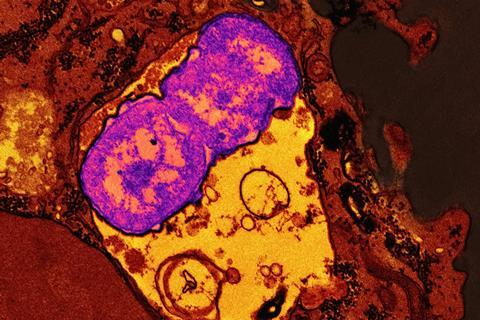Infectious diseases caused by pathogenic strains of bacteria are a global cause of morbidity and mortality.
Hospital-acquired infections caused by Klebsiella pneumoniae and Pseudomonas aeruginosa are responsible for the onset of certain life-threatening infectious diseases such as endocarditis, bacteremia, and sepsis.

Looking into the importance of these two superbugs, there is a strong need for extensive comparative differential gene expression analysis among the wild-type and mutant for betterment of intensive care unit patients especially as such pathogenic bacterial strains have a dangerous role in the intensive care unit.
This study, published in Gene Expression, revealed the RNA microarray gene expression profiles of GSE24688, GSE4026, and GSE117438. The study compared all genes from three different datasets and all drug resistance genes from two divergent organisms, Klebsiella pneumonia and Pseudomonas aeruginosa.
The findings
10 numbers of shared significant genes and five drug resistance genes were obtained in this study. These putative genes may show intriguing patterns of connection with resistance mechanisms and can be used in the field of diagnostics and treatment.
The authors says their divergent analysis also revealed a very clear distinct relation between Klebsiella pneumoniae and Pseudomonas aeruginosa at the genetic level, though they both function under antimicrobial resistance.
”We observed interesting phenomena of nonsimilarity between common significant genes and common drug resistance genes that led to conclusions about genetic divergence due to which its physical properties have been changed but chemically involved in similar drug resistance mechanisms,” they say.
Divergent evolution
”Our study used a robust integrative bioinformatics analysis of microarray data to investigate the DEG of AMR superbugs. Through a comparative analysis supported by functional enrichment results, diverse pathways and distinct biological processes, molecular function, and cellular components were highlighted.
”Interestingly, we observed 10 common genes in all three datasets that are highly expressed and significant, five genes that are present in both KP and PA and are involved in drug resistance in both superbugs. Our findings provide a detailed account of the drug resistance gene’s divergent evolution, which could open new vistas for MDR prognosis and can be informative in antimicrobial therapeutics research. The candidate gene approach can be used to validate AMR to know the potential interesting association patterns with resistance mechanisms.”







No comments yet